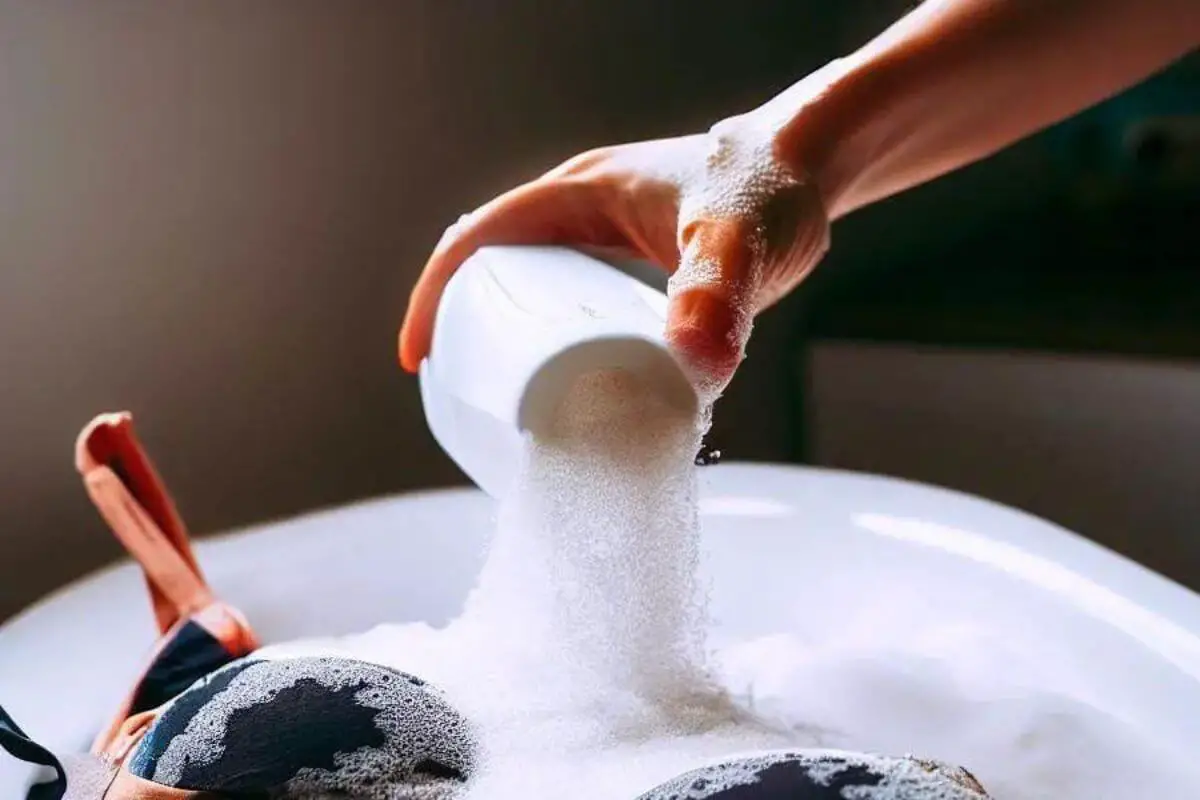A discolored bathing suit can be disheartening, especially when you’re eager to enjoy the sun and surf. However, fear not, as reviving the colors of your bathing suit is often possible with a few simple steps. In this comprehensive guide, we’ll explore various methods to address discoloration and ensure your swimsuit looks vibrant and ready for many more beach days.
I. Understanding Causes of Discoloration
Discoloration in bathing suits can be a vexing issue, and understanding the underlying causes is crucial for effective prevention and restoration. Here are common factors contributing to the fading or changes in color of your beloved swimwear:

1. Chlorine Exposure:
Explanation:
Chlorine is a potent disinfectant used in swimming pools. While crucial for maintaining pool hygiene, prolonged exposure to chlorine can react with the fabric and dyes of your bathing suit, resulting in fading or alterations in color.
Preventive Measures:
Rinse your bathing suit with cold water immediately after leaving the pool to minimize chlorine residues.
2. Saltwater Effects:
Explanation:
Saltwater, while refreshing for beachgoers, can have a detrimental impact on swimwear. Extended exposure to saltwater, coupled with the sun’s rays, may contribute to the gradual fading of vibrant colors.
Preventive Measures:
Rinse your bathing suit with cold water after ocean swims to remove salt residues and extend its lifespan.
3. Sunscreen and Lotions:
Explanation:
Sunscreen and tanning lotions often contain chemicals that can affect the color of your bathing suit over time. Continuous use of these products, combined with sun exposure, may lead to discoloration.
Preventive Measures:
Apply sunscreen at least 15 minutes before wearing your bathing suit, allowing it to absorb properly. Wash the suit promptly after use to remove lotion residues.
4. Fabric Sensitivity:
Explanation:
Different fabrics react uniquely to environmental factors. For example, materials containing Lycra or Spandex might be more sensitive to chlorine, necessitating special care.
Preventive Measures:
Check the care instructions provided by the manufacturer, especially for fabrics with specific guidelines. Follow recommended practices to maintain color integrity.
5. Repeated Use without Proper Care:
Explanation:
Overusing a particular bathing suit without proper care can expedite color fading. Continuous exposure to various elements without adequate rinsing or washing contributes to discoloration.
Preventive Measures:
Rotate between multiple swimsuits to distribute wear evenly. Adopt a routine of rinsing and washing after each use.
6. Quality of Fabric and Dyes:
Explanation:
The quality of the fabric and dyes used in the manufacturing process plays a significant role. Inferior dyes or subpar materials may not withstand environmental stressors, leading to premature discoloration.
Preventive Measures:
Invest in high-quality swimwear known for colorfastness. Quality fabrics and dyes are designed to resist fading and maintain vibrancy.
7. Abrasive Surfaces:
Explanation:
Rough surfaces, such as concrete or rough pool edges, can contribute to wear and tear. Constant friction can degrade the fabric and compromise color integrity.
Preventive Measures:
Be cautious about sitting or rubbing against abrasive surfaces. Choose designated seating areas and use towels to protect your bathing suit.
Understanding these causes empowers you to adopt preventive measures and implement suitable treatments to restore and preserve the colors of your bathing suits. Taking proactive steps ensures that your swimwear remains a vibrant and stylish companion for many seaside adventures to come.
II. Preventive Measures for Future Wear
A. Rinse After Each Use
- Immediately rinse your bathing suit with cold water after every use. This helps remove chlorine, salt, and sunscreen residues that can contribute to discoloration.
B. Alternate Between Swimsuits
- Rotate between multiple swimsuits to give each one time to rest between wears. This helps preserve the elasticity and color of the fabric.
III. Methods to Fix Discoloration
A. Vinegar Soak
i. Ingredients:
- White vinegar
- Coldwater
ii. Procedure:
- Fill a basin or sink with cold water.
- Add one cup of white vinegar to the water.
- Submerge the discolored bathing suit and let it soak for 30 minutes to an hour.
- Gently rub the fabric together to loosen any embedded particles.
- Rinse the bathing suit with cold water.
B. Baking Soda Paste
i. Ingredients:
- Baking soda
- Coldwater
ii. Procedure:
- Create a paste by mixing baking soda with enough cold water to form a thick consistency.
- Apply the paste to the discolored areas of the bathing suit.
- Gently rub the fabric using a soft brush or your fingers.
- Let it sit for 15-20 minutes.
- Rinse the bathing suit thoroughly with cold water.
C. Lemon Juice and Sun Exposure
i. Ingredients:
- Fresh lemon juice
- Sunlight
ii. Procedure:
- Saturate the discolored areas of the bathing suit with fresh lemon juice.
- Place the bathing suit in direct sunlight for 1-2 hours.
- Lemon juice, combined with sunlight, can act as a natural bleach to lighten discoloration.
- Rinse the bathing suit with cold water.
D. Commercial Color-Restoring Products
i. Usage:
- Follow the instructions on the selected color-restoring product.
- Many products are designed specifically for swimwear and can be effective in revitalizing colors.
IV. Post-Treatment Care
A. Hand Wash Only
- After using any of the above methods, or when cleaning your bathing suit in general, always hand wash with a mild detergent. Avoid machine washing to prevent further damage.
B. Air Dry
- Allow your bathing suit to air dry instead of using a dryer. Excessive heat can contribute to color fading and damage the elasticity of the fabric.
C. Store in a Cool, Dark Place
- When not in use, store your bathing suit in a cool, dark place away from direct sunlight. This helps maintain the vibrancy of the colors.
V. Conclusion: Embracing Vibrancy Again
In conclusion, fixing a discolored bathing suit is an achievable task with the right methods and care. By understanding the causes of discoloration, implementing preventive measures, and utilizing the suggested treatments, you can bring life back to your favorite swimwear.
May your bathing suit once again radiate the vibrant colors of summer, allowing you to confidently dive into the waves and bask under the sun.
VI. Maintaining Long-Term Color Brilliance
A. Rotate Swimwear Collection
- If you have multiple bathing suits, regularly rotate them to prevent overuse of any particular piece. This practice distributes wear and tear, preserving colors for an extended period.
B. Invest in Quality Swimwear
- Consider investing in high-quality swimwear with excellent colorfastness. Quality fabrics and dyes are less prone to rapid fading, ensuring your swimsuit remains vibrant through multiple seasons.
VII. DIY Color Test (For New Swimsuits)
A. Spot Test Before Use
- If your swimsuit is new, perform a small colorfastness test before wearing it for the first time. Apply a small amount of water to an inconspicuous area to check for color bleeding.
B. Preventive Color Seal
- Seal in the colors of a new swimsuit by soaking it in a mixture of cold water and a tablespoon of salt for 30 minutes. This can help set the dyes and prevent potential color bleeding.
VIII. Understanding Fabric-Specific Care
A. Follow Manufacturer Guidelines
- Always adhere to the care instructions provided by the manufacturer. Different fabrics require specific care, and following guidelines ensures the longevity of both color and fabric integrity.
B. Lycra/Spandex Blend Care
- If your swimsuit contains Lycra or Spandex, avoid excessive exposure to chlorine, as these materials are more sensitive to it. Rinse thoroughly after swimming in chlorinated pools.
IX. Recoloring Faded Areas (Advanced)
A. Fabric Dye for Swimwear
- For severely faded areas, consider using fabric dye specifically designed for swimwear. Follow the instructions carefully to restore colors to their original vibrancy.
B. Professional Restoration
- In cases where DIY methods may not suffice, consider professional restoration services. Some companies specialize in swimwear restoration, offering advanced treatments to revive colors.
X. Conclusion: Savoring Every Splash of Color
In conclusion, the journey to revive a discolored bathing suit involves a combination of preventive measures, DIY treatments, and understanding the unique care needs of swimwear. By implementing these strategies, you not only fix discoloration but also ensure the long-term brilliance of your favorite swimsuits.
May your swimsuits continue to be a vibrant expression of your style, accompanying you on countless adventures and making every splash a celebration of color.
Frequently Asked Questions (FAQs) about Fixing Discolored Bathing Suits
How can I prevent my bathing suit from discoloring?
To prevent discoloration, rinse your bathing suit with cold water after each use, alternate between swimsuits, and avoid prolonged exposure to chlorine, saltwater, and sunscreen.
What causes discoloration in bathing suits?
Common causes include exposure to chlorine, saltwater, and chemicals in sunscreen. Over time, these factors can react with the fabric and dyes, leading to fading or changes in color.
Can I use regular bleach to fix a discolored bathing suit?
It’s not recommended to use regular bleach, as it can damage the fabric and compromise elasticity. Instead, opt for gentle remedies like vinegar, baking soda, or color-restoring products designed for swimwear.
How often should I wash my bathing suit to prevent discoloration?
Rinse your bathing suit with cold water after each use. If used frequently, consider washing it with mild detergent after every 3-4 wears. Avoid machine washing and always hand wash for optimal care.
Can I fix discoloration in a bathing suit with patterns or prints?
The methods mentioned, such as vinegar soak or lemon juice treatment, are generally safe for patterned or printed bathing suits. However, always perform a spot test in an inconspicuous area before applying any treatment.
Is it possible to restore the original color of a severely faded bathing suit?
Yes, you can try advanced methods like using fabric dye specifically designed for swimwear or seeking professional restoration services. Follow the instructions carefully for the best results.
How do I set the colors in a new swimsuit to prevent bleeding?
Soak a new swimsuit in a mixture of cold water and salt for 30 minutes before wearing it. This can help set the dyes and prevent potential color bleeding. Always perform a colorfastness test before use.
Can I use a washing machine to clean my bathing suit?
It’s recommended to hand wash your bathing suit with a mild detergent. Machine washing can be harsh on the delicate fabric and lead to color fading and damage to the elasticity.
How do I recolor specific areas of a bathing suit?
Consider using fabric dye specifically designed for swimwear to recolor faded areas. Follow the instructions carefully for the best results, and perform a spot test before applying the dye.
After fixing discoloration, how do I ensure my bathing suit maintains its color long-term?
Rotate between multiple swimsuits, follow fabric-specific care guidelines, and avoid excessive exposure to chlorine and direct sunlight. These practices help maintain the vibrancy of your bathing suit over time.



